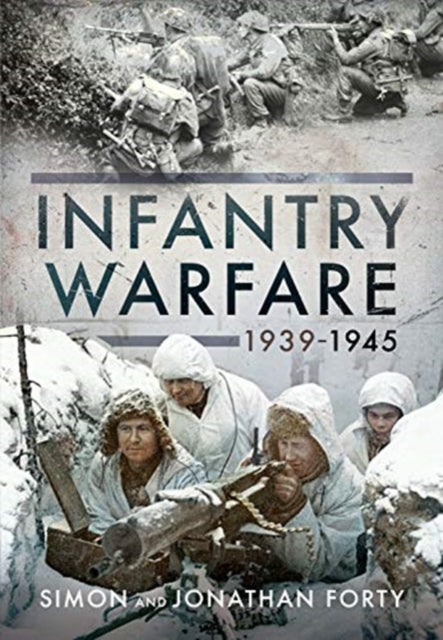A Photographic History of Infantry Warfare, 1939-1945
Usually shipped within 24 hours
UK deliveries from £5.95
Delivery & Returns
Delivery & Returns
We use the Royal Mail, DHL Express or UPS for our customers. For UK addresses, deliveries under 10kg are a standard £4.95 via Royal Mail Tracked 48 Service. For orders over 10kg and overseas customers, postage is calculated for you at checkout once you have entered your postal address. This price, does not include any potential custom charges that may apply, depending on the product or destination, as every country has very different import duties / taxes. Online exclusive products (such as trainers) will be delivered to you directly from the printer, separate from other items in your order, but your postage fee covers ALL items in your order.
If you are unhappy with your purchase, please email shop@tankmuseum.org within fourteen (14) working days of receiving your goods, and return it to us at the address below, in its original condition, unopened (with any seals and shrink-wrap intact) and we will issue you a full refund or replace it. Goods must be returned at your own cost. If the item is faulty, you do not need to return it, we will send you a replacement free of charge.
Description
Description
By Jonathan and Simon Forty
Hardback
The infantry can always be found at the sharp end of the battlefield. You may be able to crush an opponent with armour or artillery, but there's only one way to take and hold ground and that's with riflemen - the 'poor bloody infantry'. And it is the infantrymen of the Second World War - from all sides, Allied and Axis - who are the subject of this highly illustrated history.
It uses over 400 wartime photographs plus contemporary documents and other illustrations to show the developments in equipment, training and tactical techniques and to give an insight into the experience of the infantry soldier during the conflict. Although the infantry were critical to the war effort, their contribution is often overshadowed by the more dramatic roles played by soldiers with more specialized skills - like tank crew, paratroopers and special forces. They also suffered devastating casualties, in particular during the last phase of the war in the west when around 20 per cent of an infantry division's riflemen were likely to die and over 60 per cent could expect to be wounded.
So as well as describing how the infantry fought, the authors look at the motivation which kept them fighting in awful conditions and despite brutal setbacks. The result is a thorough, detailed and revealing portrait of infantry warfare over seventy years ago.
![A Photographic History of Infantry Warfare, 1939-1945 Book [variant_option4]](http://tankmuseumshop.org/cdn/shop/files/9781526776822.jpg?v=1752223335&width=1214)

![A Photographic History of Infantry Warfare, 1939-1945 Book [variant_option4]](http://tankmuseumshop.org/cdn/shop/files/9781526776822.jpg?v=1752223335&width=88)
![Tank Museum Playing Cards Game [variant_option4]](http://tankmuseumshop.org/cdn/shop/files/ProductShoot_10_10_2025035.jpg?v=1760358498&width=176)
![Tank Museum Wrapping Paper - Two sheet pack Wrapping Paper [variant_option4]](http://tankmuseumshop.org/cdn/shop/products/Wrapp_Paper_All.jpg?v=1748337915&width=176)
![A Photographic History of Infantry Warfare, 1939-1945 Book [variant_option4]](http://tankmuseumshop.org/cdn/shop/files/9781526776822.jpg?v=1752223335&width=640)



